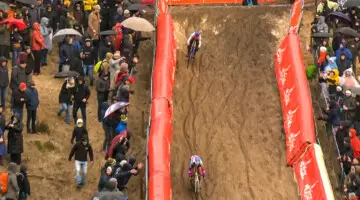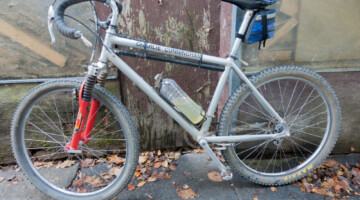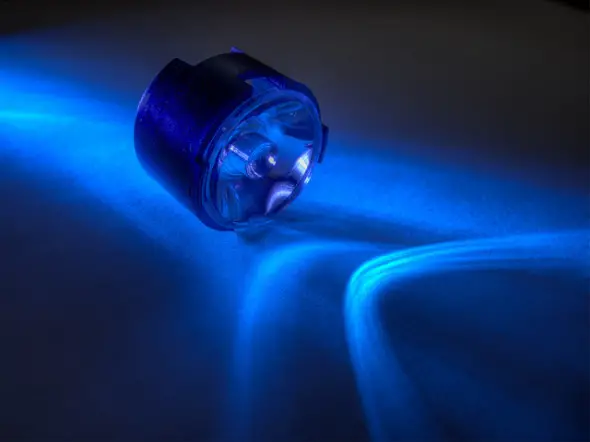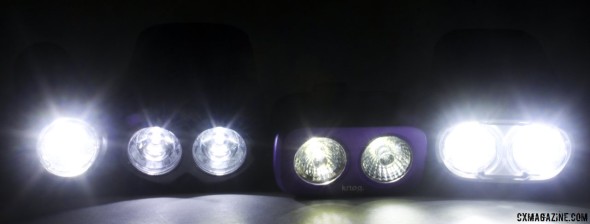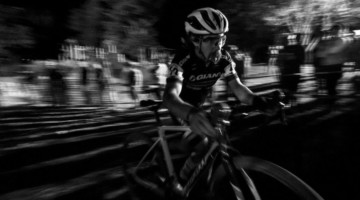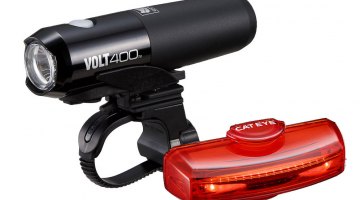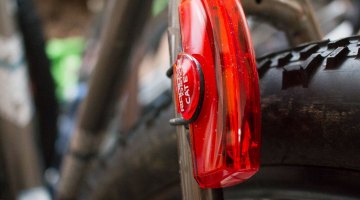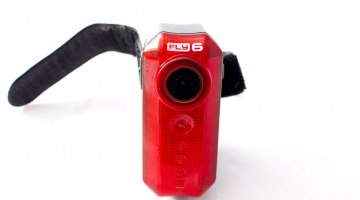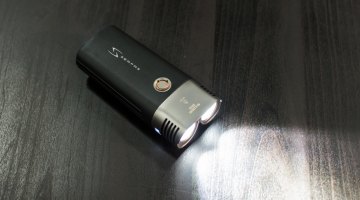With Daylight Savings ending a week ago, cyclocrossers throughout the States (except Hawaii and most of Arizona) are lamenting the change as there’s now minimal daylight for training after work.
If you’ve got your eye on late-season races, a series title, or perhaps a run at a national championship title in Boulder come January, unless you’re Matt Kelly, you’re going to need to find a way to train outside. If you don’t have the luxury of morning or lunchtime rides, and if you commute to work, a good bike light is essential training equipment.
These next few days we’ll be looking at a few light systems in hopes of finding the perfect cyclocross light so that you can extend your training into the darker hours without needing night vision goggles or echolocation. So what’s the criteria?
Choosing the right bicycle light for your needs should involve more than looking at lumens or candlepower and price. Lumens measures total light emitted in all directions, and we all know the pattern of that beam matters. Just like tire widths, there’s also a difference between listed and measured lumens. (We won’t be measuring brightness of lights, since there’s so much more to lights than measuring the brightest spot, although our friends at MTBR.com do a great job of measuring the output of lights in lux units in their light shootout.)
We contend that a cyclocrosser’s light needs are a bit unique. They’re more specific and intense than a commuter’s, and certainly different than a mountain biker’s. While a cyclocrosser may also commute and go for long mountain bike rides at night, come cyclocross season, we think there are a few cyclocross-specific criteria that you should look for in lights if you need a light for cyclocross practice or training:
- Rechargeable. Most lights are rechargeable nowadays, but don’t be tempted by the cheaper, disposable battery-powered units. Sure, you can put in some rechargeable batteries, but these lights tend to be dim, and the inconvenience of taking batteries in and out isn’t worth it if you’re going to use your light regularly.
- Self-Contained. We’ve dealt with cords and external battery packs, in both water-bottle and velcro-attached formats, and can’t count the number of times a cord pops loose during a barrier or shouldering run. Remounting is hard enough. Doing it in the dark is asking for trouble. And taping everything together is sticky and slow.
There’s a growing category among bicycle headlights, and it’s the “Crossover” or “Hybrid” category of headlights that’s more than just a commuter “visibility” light but not quite designed for burn times or brightness demanded by the 24-hour mountain bike crowd. They’re typically self-contained lights with a built-in rechargeable battery, with burn times more than an hour and brightness to still ride off road. Sounds perfect for cyclocross, right? That’s the category we’ll be looking at primarily in our reviews. - Bright enough. You probably won’t be bombing down technical terrain at 30mph at cyclocross practice, but you probably want to see your barriers, ruts and wet corners when training, and need enough light to be seen by cars when on the road. 200-300 lumens is probably the bare minimum if you hope to better see where you’re going, rather than just be seen. But lumens is really only half the equation, since beam pattern and focus matters. LEDs are the name of the game—halogen and “stadium” lights are all but dead now, but lights employ LEDs in different quantities and brightness to modify the beam pattern.
- Weatherproof-ness. We don’t need to tell you that cyclocross happens in rain, snow, ice or shine, and if you’re hard enough to train regardless of the weather, you want your light to perform as well.
Of course, it goes without saying, we all want fast, easy recharging, long battery life and great brightness in an affordable, durable package. What do you look for in a light for cyclocross training? Drop a comment below.
See our recent light reviews:
And stay tuned as we attempt to brighten your week and bring you more reviews of a handful of lights this week.
Need it in a flash? Check out past reviews of the Knog Blinder 4V and Serfas Thunderbolt. Also see this timeless classic: “Riding the Night Train – Tips and Tricks for Cyclocross Training at Night.”











